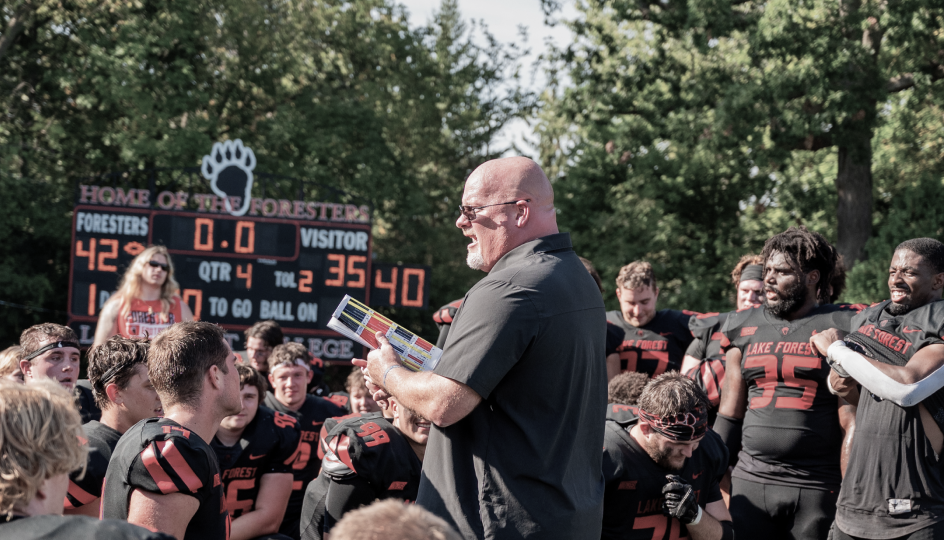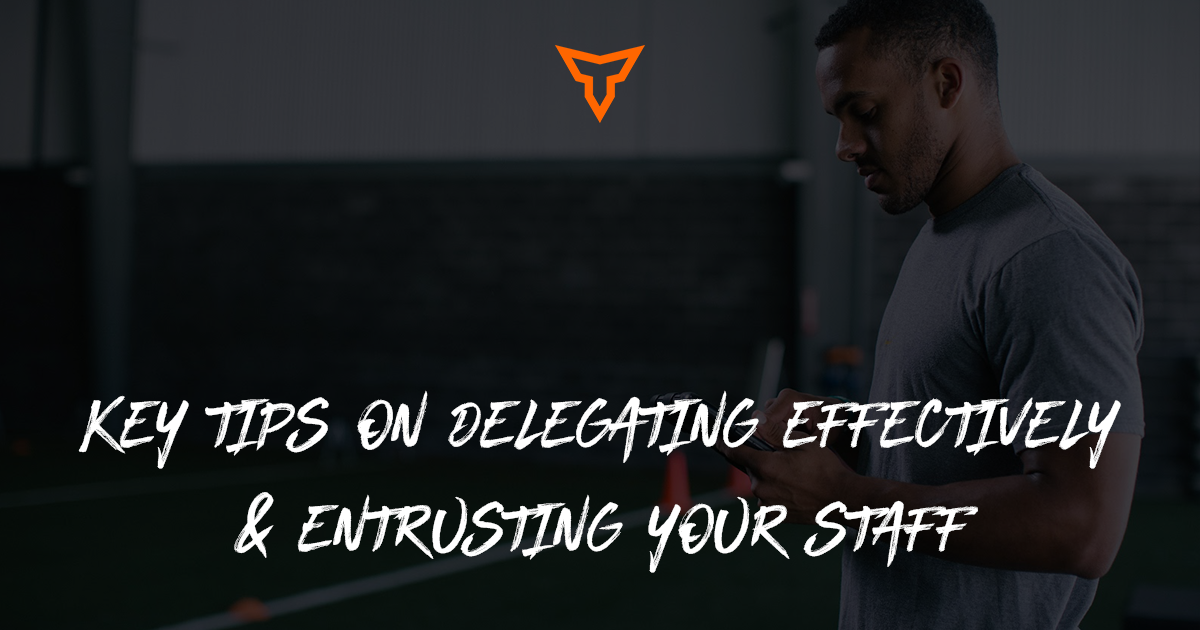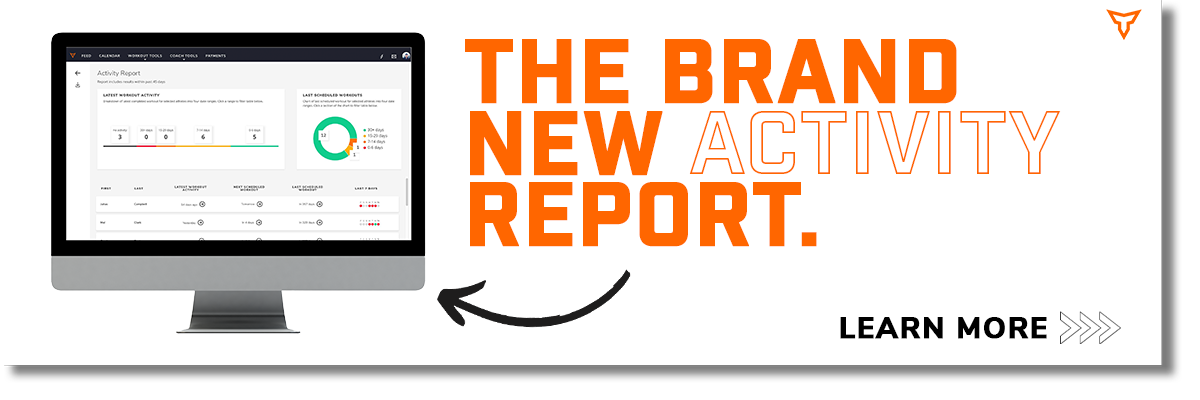Making Staff Development a Priority
Throughout my career I’ve made it a priority to focus on staff development, specifically with a “leadership first” approach. I found out early on that as the leader, I must set the expectations and lead by example or there’s little credibility behind what I would say. It reminds me of an ancient proverb/omen about how a fish rots from the head down - I was cognizant of not letting my [team/staff/department] rot from the head (me) down.
To lead effectively, I focused on communication before collaboration. If you want your staff to work together (collaborate) it starts with you as the leader having a willingness to listen before speaking, and I mean actually listen with the intent to understand (not with the intent of responding). Only after effective communication has been established can collaboration begin.
Next up, I worked on letting my staff do what they’re good at (their jobs!). I’ve met some type-A people out there who are micromanagers to the core (thankfully I didn’t run into this with myself).
A micromanager is not a leader because a micromanager doesn’t develop other members of the staff to step up and be leaders.
And lastly, to set a developing and positive culture the leader must be a learner and willing to admit mistakes. This is why I sought out creative means of staff development - increasing communication, collaboration, leadership, and learning. We had varied interests and skills on the staff, so nobody liked ALL the staff development activities, but we each excelled in our own ways at them - or had an opportunity to learn.
Before I list a few staff development methods I’ve used, I wanted to share my principles of staff development. Like I mentioned above, your whole staff won’t like all of the efforts to develop as a staff, but if your tactics hit on as many of these principles as possible, you’re on the right track:
- Team cohesion (culture and chemistry)= social cohesion (relationships) + task cohesion (goal-oriented)
- The Golden Rule - treat others as you want to be treated
- They don’t know how much you care, they don’t care how much you know
- Know your why - your purpose and passion
- Hire people who are strong in your areas of weakness
- Take care of your staff first so they can take care of the athletes
- Encourage staff members to grow – outside committees, continuing education, certifications, etc.
- You can’t coach what you don’t teach
- Build it right first so you don’t have to worry and fixing it later
With those principles in mind, here are a few staff development opportunities I’ve used in the past.
Staff Cleaning:
This is a tough one to start off with, but people will grow to understand why it’s important. Throughout my time as a director, the entire staff carved out an hour block in the week to clean the weight room. And I mean deep clean - wipe down all equipment, clean floors, squeegee mirror, the whole nine yards. We’d divide up the cleaning tasks and during the hour we’d blast music, each staff member getting their week to pick the station/playlist.
Some hated it. Most tolerated it. But there’d be weeks where you’d come in finding us having FUN while cleaning the weight room - it just took the right tunes on the right day to lighten up the mood and have everyone yelling (aka singing) at the top of their lungs while wiping, mopping or vacuuming.
Staff Meetings:
It might seem intuitive, but you’d be surprised at how many people skip a regular meeting because “we all work in the same office anyway”. But having a designated meeting time keeps your staff informed of everything going on in and outside of your department. It can go a long way when your staff knows they’re kept in the loop.
Staff Meals:
Doesn’t matter if it’s breakfast, lunch, or dinner but once per week (or month) pick a location to go eat outside of work together. Rotate who gets to pick the place, and if you’re able to ‘treat’ your interns to lunch as a way to say thanks for working for free, it will mean a lot.
Just the simple act of getting outside of the workplace on a regular basis can help get to know things about each other you may not have otherwise gotten to know. Whether it’s a soda preference or a weird way of eating, those nuanced things can help connect your staff as people, not just as co-workers.
Staff Lifts:
You’ve seen how it can bring a team together as you’re training them - they make it through a brutal lift and they did that TOGETHER. Same goes for you and your staff - do hard things together; learn new lifts together; help each other get stronger (literally) and watch how that carries over into other areas of your staff operations (not to mention getting better at coaching!).
Staff Get-Togethers:
Similar to staff meals outside of work, find opportunities to get together outside of work, but get creative. It can be as simple as going fishing, or having a bowling night; or as elaborate as having a big cookout where families are invited as well. Paintball, movie night, poker night, tough mudder type runs, and anything else in similar categories. The more you’re enjoying your staff as people, the better the staff synergy will become.
Staff Trips:
We always made it a point to go to national conferences (NSCA or CSCCa) together - but old school. If time allowed (which we almost always made it allow), we would rent those giant passenger vans and road trip to wherever the conference was. You learn a lot about people and make a ton of memories doing things like that. And it doesn’t have to be a big national conference - if your state has a local conference, road trip to it and make a staff development opportunity out of it.
Staff CEUs/Presentations:
Whether they’re official presentations/CEU opportunities outside your department, or just having staff members present to the staff on topics of interest/areas of expertise, we always have a lot to learn from others. You can also attend or ‘take’ CEUs or courses as staff so you’re learning something together. That shared experience can help quickly build up a staff’s cohesion.
These are just some ideas I’ve done in the past, I’m sure you can come up with many others. Take time to make sure you’re investing in yourself and your staff to grow and be examples to your athletes. They see a coaching staff getting it done and they know they can with their teammates as well.
Subscribe to our blog
Subscribe to receive the latest blog posts to your inbox every week.
Related posts

Psychology Principles You Should Be Utilizing

5 Steps To Create a System For Staff Development


